

HISTORY OF THE WAR MEMORIAL
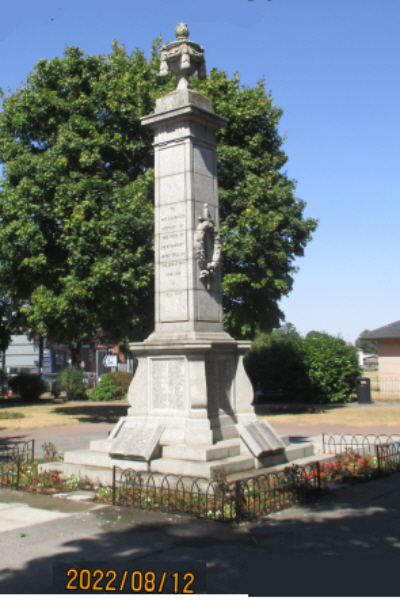
2022
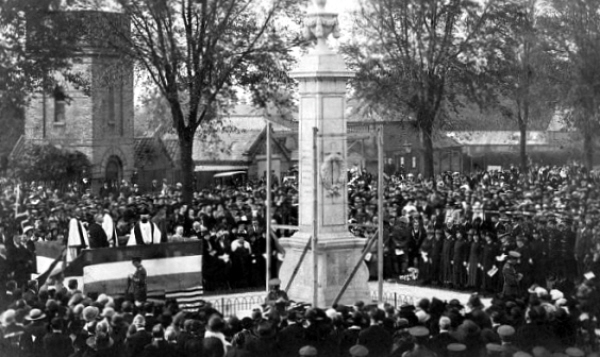
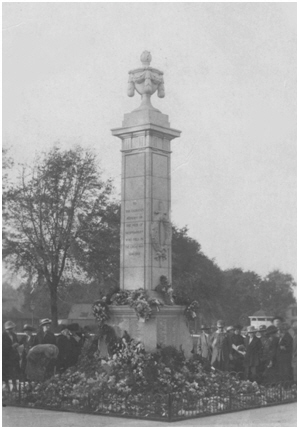
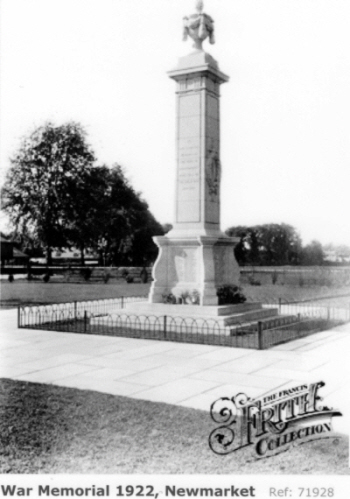
photo Francis Frith collection
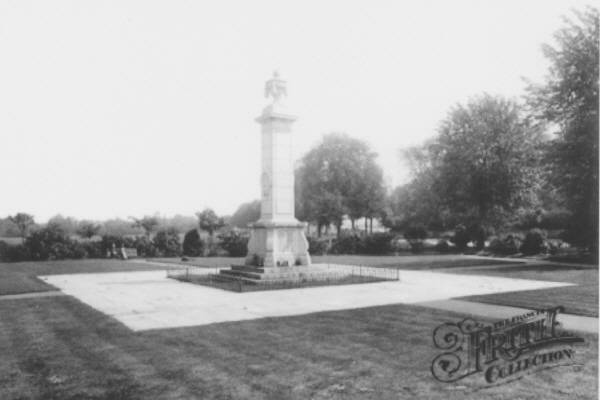
photo Francis Frith collection
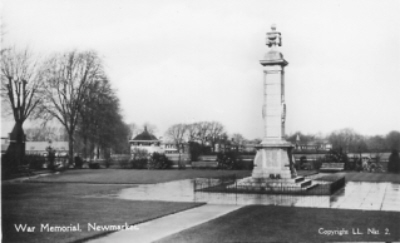
Postcard from Louis Levy (late 1920's)..courtesy Roger Newman
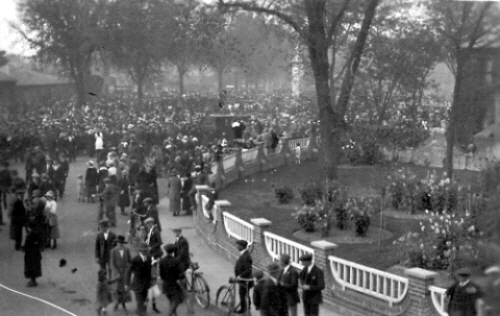
Street scene on dedication day (the wall on right is where Majestic Wines are now in 2022)
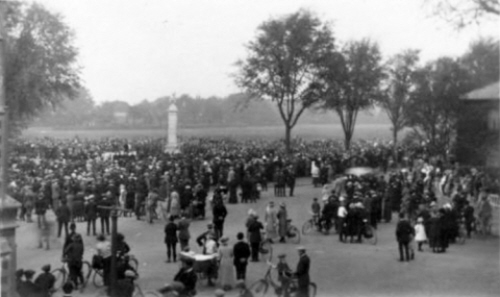
Another street scene on dedication day
History of the War Memorial
|
As gleaned from reports in the Newmarket Journal of the time) The Newmarket War memorial was unveiled by Major-General Sir William Lambton Dedicated by Dr. David Lord, the Bishop of St Edmundsbury & Ipswich on 16th October 1921. The site was donated by The Jockey Club and laid out by the Newmarket Urban District Council (Surveyor Mr. W.Eley). The monies were raised by public subscription and the memorial cost £2,000 to erect. Built by N.U.D.C. and Brindley & Palmer. Currently (2020) it is the responsibility of Newmarket Town Council. This is a humble attempt to add to, and preserve, the record of those from Newmarket who died in the two World Wars. The research in the first place came from a joint effort by Rodney Gibson of Kedington and by William Smith, the Newmarket Local History Society Archivist. Then Tony Pringle used the internet to search for more details of the cemeteries where they lay, or the Memorials around the world on which they are commemorated. It is hoped that this may assist their descendants to learn more about them. The release of the 1911 census has meant more positive identification for many of them. The web site of the Commonwealth War Graves Commission provided much information as did "Soldiers Died in the Great War", www.ww1cemeteries.com. and www.twgpp.org, and of course Ancestry and Find my Past to two major subscription genealogy websites Where credit or copyright of any images is given, this also applies to further usage, but for the rest, the website, designed by Tony Pringle, is free from any copyright ( a credit would be appreciated) and it is hoped it may encourage further research into the men and women of Newmarket who made the supreme sacrifice for their country. After the Great War of 1914-18 there was a great deal of discussion as to the form of a Memorial. A committee of prominent citizens was set up which, after much debate, eventually organized a local referendum, the result of which was reported in the Newmarket Journal of 14th June 1919. Cottages for disabled servicemen, or war widows…..625 votes Setting up Recreation Ground on the Severals and a Monument…..554 votes Setting up a free Library …..308 votes Spoilt votes 90 There were only 1577 votes from a possible electorate of around 4,200 It seems that more words were printed about the Memorial scheme than the sum of all reports of the deaths of the men that it was to honour. Originally the Severals was owned by Major McAlmont and leased to the Jockey Club. The Council had previously considered purchasing the land, but the price was too high for them. The idea for cottages was quickly dropped as the overall cost would have been prohibitive in view of the number of dwellings that may have been needed. After the war the Jockey Club was prepared to release part of the Severals as a Recreation Ground on the condition that funds were in place to avoid a charge being made on the rates. This sum was not forthcoming however, less than 200 contributors being willing to finance it. A petition was set up by some trainers to oppose the scheme. The Cricket and Football Clubs were seemingly content with their existing ground and the scheme was dropped. Meanwhile Exning had overwhelmingly decided to go their own way and erect their own Memorial, independent of Newmarket, sharing any such funds, pro rata, as the five wards of Newmarket and Exning could collect. In the event the western corner of the Severals, nearest the Clock Tower, was adopted as the site for the Memorial. Even then it appeared that the Electricity Company insisted on payment for moving a sub station pylon from that corner. This cost was eventually met by a private individual. The Suffolk Archives give no more information, since all that was supplied to the County Council was a list of names on the Memorial, and not, as from many other towns, details as to rank, number or service unit and any decorations. After the Second World War there was again much local discussion until late in 1949 an attempt was made to obtain by public subscription the £6,000 required for extra tablets to be added to the Memorial. Sadly,initially, less than £50 was raised. This time the Jockey Club again agreed to donate the rest of the Severals as a recreational area as an additional memorial, but this was thwarted by pressure from many of the trainers. Eventually four tablets in the form of open books recording the names of the casualties of the 1939-45 war were installed and later even more discussion was involved before some missing Service personnel and civilians killed in the bombing raid on the High Street on 18th February 1941 were added. One explanation for the lack of interest in voluntary donations towards the Memorial after both wars was possibly the belief that these men/women had died for their country, so the least the country could do was pay for their names to be placed on the Memorial. There is apparently no record of the criteria used to ascertain whose name was to appear on the Memorial for either war. Many casualties from Newmarket do not appear on the memorial, even though they may be recorded on local school or church memorial tablets. There are cases where even two brothers names do not appear together on the Memorial, even though they are commemorated elsewhere. We have some cases where we know which local person is commemorated, but as yet cannot identify which casualty he may be. In other cases we are sure of the casualty but are unable to link him/her with a local connection. Our fervent hope is that over time we may found more answers. Better still if we can also acquire images of the actual casualties so the names on this Memorial are no longer just names to us. Some of those commemorated on the War Memorial are not included on the Commonwealth War Graves Commission Debt of Honour. They are probably amongst many who died after discharge from the Armed Services but died as a result of injuries or illness acquired during the war, or sometimes it was simply a case of lost records. Three who are buried in Newmarket cemetery were added to the National Book of Remembrance with the assistance of "In from the Cold. This was as the result of research by Tony Pringle, their death certificates being accepted as giving the necessary evidence to link the casualty’s death with his/her military service. This can be a very long winded procedure, but eventually it was done and better still, three CWGC headstones were installed on their graves. Any correction to, or information in addition to that on this website is always welcome, especially any photographs of the casualty. These can be forwarded by firstly emailing webmaster@undyingmemory.net Such was the nature of life in those days that one should be circumspect regarding all dates and ages, which can vary wildly from source to source. |
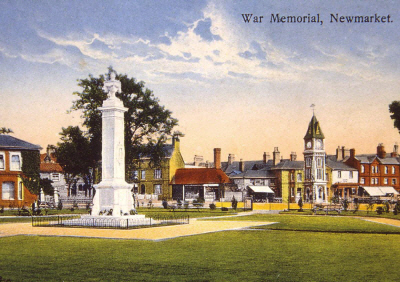
A postcard of around 1922, from Peter Norman
|
The Memorial was cleaned and lettering repaired in the summer of 2011, thanks to funding from Friends of the British Legion. At a ceremony conducted by Town Mayor, Keith Bovill on Wednesday 20th July 2011 many of the relatives of the casualties named on the Memorial were present and wreaths were laid Jenny Offley (Newmarket College) read Rupert Brooke's "The Soldier" and Councillor Bill Sadler spoke the Exhortation,a bugler sounded the Last Post, followed by a minutes silence and Reveille After a Reading by Father John Hardy many retired to the Cricket Pavilion where there were light refreshments and a display by the Newmarket Local History Society |
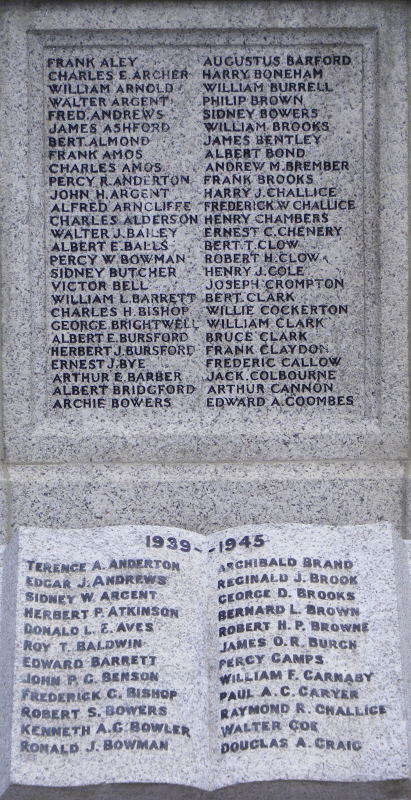
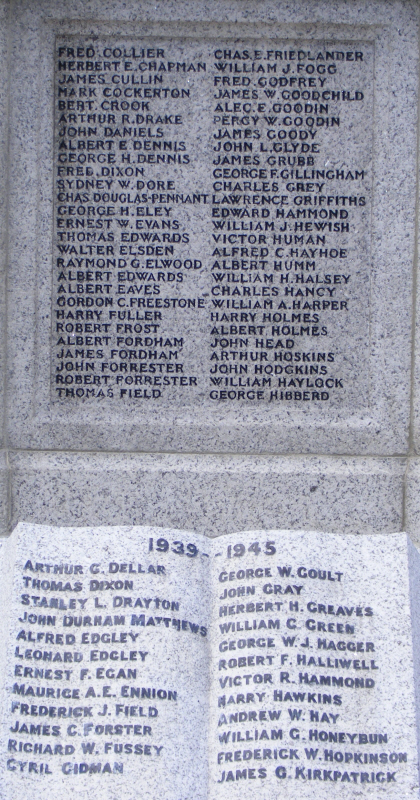
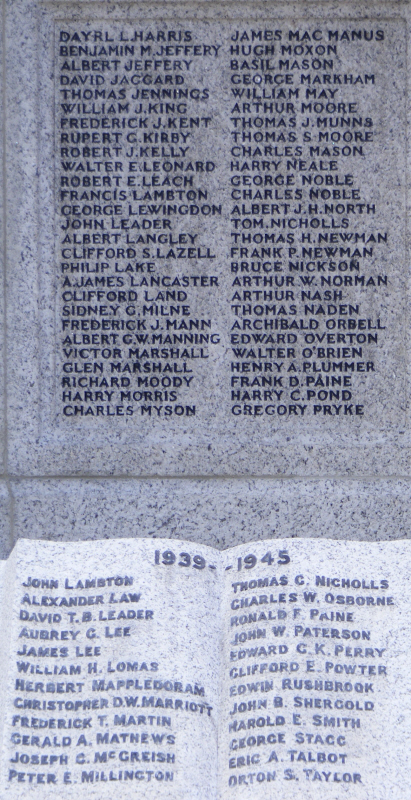
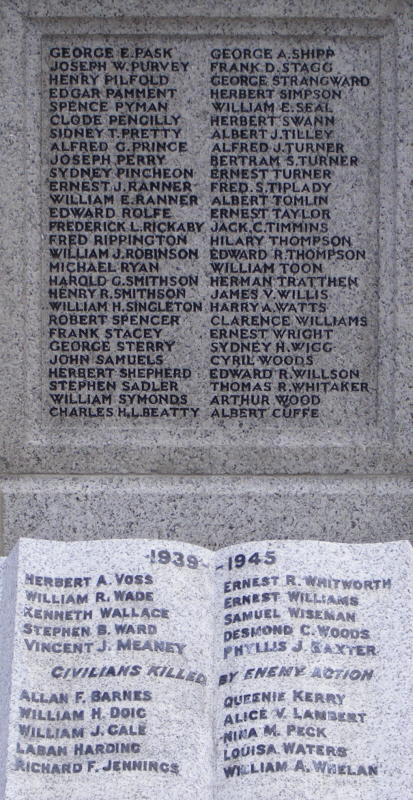

Commonwealth War Graves Commission, Debt of Honour Criteria
|
Lest there is confusion as to how some names are included on these Memorials, Rolls of Honour etc, there follows the criteria laid down by the Commonwealth War Graves Commission for their Debt of Honour. Category One:- Commonwealth men and women who were still in military service at the time of their death. These personnel automatically qualify for commemoration provided they died within the qualifying dates:First World War - 4th Aug. 1914 to 31st Aug. 1921 Second World War - 3rd Sept.1939 to 31st Dec. 1947 The location of their death and the cause of death are immaterial to their qualification. They could have been killed in action, died of wounds, died of illness or by accident, died due to suicide or homicide or even suffered judicial execution. CWGC treats all casualties equally and all must be commemorated under the terms of their Royal Charter. Category Two:- Personnel who had been discharged from or retired from the military before their deaths during the same qualifying periods of an injury or illness caused by or exacerbated by their service during the same qualifying period. These cases qualify only if it is PROVEN to the authorities' satisfaction that death was service attributable. Category Three:- War grave status and CWGC commemoration is restricted to personnel serving in a Commonwealth armed force but members of certain civilian organisations may qualify if they meet various additional criteria. Each organisation has to meet slightly varying criteria but essentially death has to have occurred due to a war related cause and whilst serving overseas though subsequent service-related deaths can also qualify. Again, death must occur within the qualifying dates though these sometimes cover a shorter period than the standard ones above depending on the organisation. Examples of qualifying civilian organisations are:- First World War – Mercantile Marine, British Red Cross Society, YMCA and Voluntary Aid Detachments. Second World War – Merchant Navy, Home Guard, War Correspondents and BOAC. Some common abbreviations used in this website CWGC = Commonwealth War Graves Commission "Soldiers Died" = from entries on Ancestry or Find my Past from the book "Soldiers Died in the Great War" CSS - Casualty Clearing Station An unusual view of the Memorial - Christmas 2010 by Mike Mingay
|